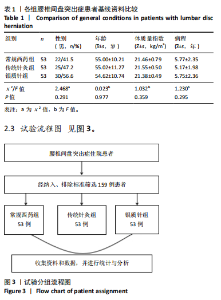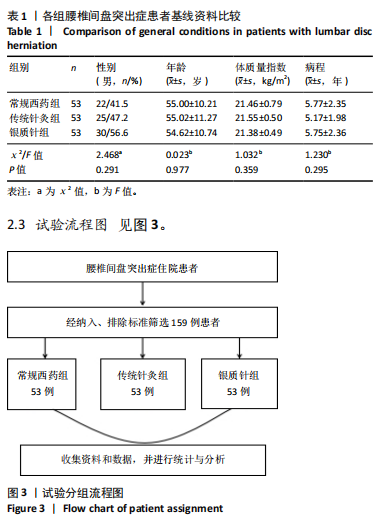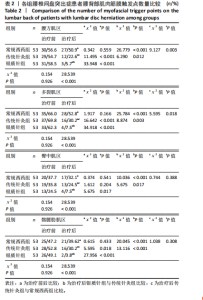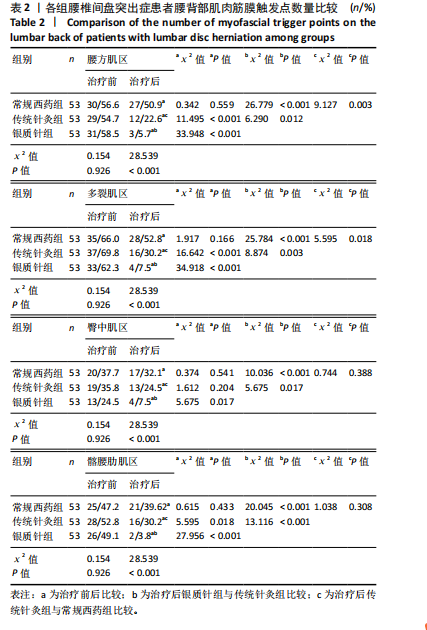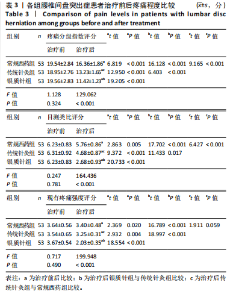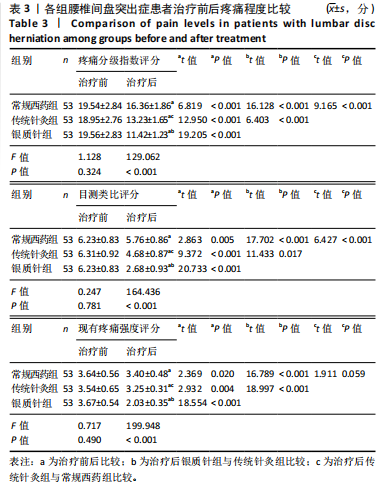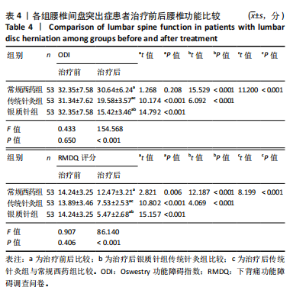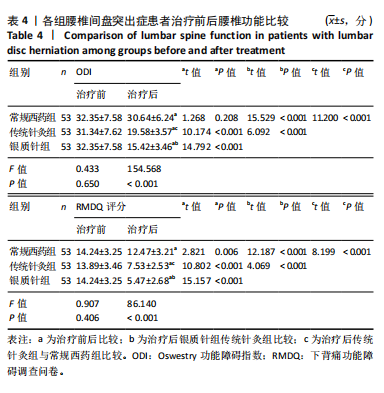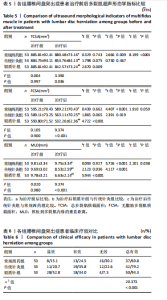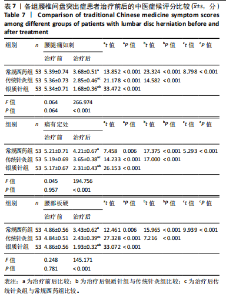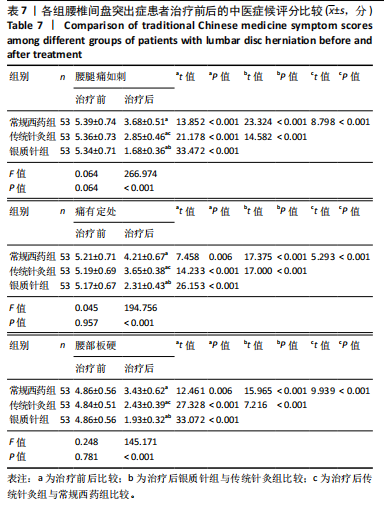[1] 陈述芳,王开强,黄强民,等.针刺肌筋膜触发点、经络穴位联合推拿治疗腰椎间盘突出症的临床疗效观察[J].河北中医,2017, 39(9):1378-1383.
[2] 胡零三,赵烨,张承哲,等.腰椎间盘突出症患者腰骶部多裂肌脂肪变化的影像学研究[J].中国骨伤,2020,33(2):173-177.
[3] 朱文婷,郭长青,赵莉.超声可视化针刀联合火针治疗旁中央型腰椎间盘突出症的临床研究[J].中国中医急症,2023,32(12): 2107-2111.
[4] 谌虎,沈浩.密集型银质针松解术联合中药熏洗治疗腰椎间盘突出症的临床研究[J].河北中医,2024,46(1):109-112.
[5] 陈璐,曹江鹏,杜元灏.针灸肌筋膜触发点作用机制研究进展[J].辽宁中医杂志,2024,51(3):217-220.
[6] 中华医学会骨科学分会脊柱外科学组,中华医学会骨科学分会骨科康复学组.腰椎间盘突出症诊疗指南[J].中华骨科杂志,2020, 40(8):477-487.
[7] 白雪,孟庆刚.几种优效性随机对照试验样本量估算的比较研究[J].中华中医药学刊,2018,36(10):2494-2497.
[8] 王华,杜元灏.针灸学[M].北京:中国中医药出版社,2012:308.
[9] 刘绮,麦明泉,肖灵君,等.中文版Oswestry功能障碍指数评定慢性腰痛患者的反应度研究[J].中国康复医学杂志,2010,25(7):521-524.
[10] JIRARATTANAPHOCHAI K, JUNG S, SUMANANONT C, et al. Reliability of the Roland - Morris Disability Questionnaire (Thai version) for the evaluation of low back pain patients. J Med Assoc Thai. 2005;88(3): 407-411.
[11] 国家中医药管理局.中医病症诊断疗效标准[M].南京:南京大学出版社,1994:201-202.
[12] 国家中医药管理局.ZY/T001.1~001.9-94中医病证诊断疗效标准[S].南京:南京大学出版社,1994:12-19.
[13] 李伟,徐洪亮,王慧芳,等.银质针为主综合治疗腰椎间盘突出症临床分析[J].上海针灸杂志,2014,33(4):356-359.
[14] 李鸿鹏,张迪,刘志祥,等.筋膜触发点浮针治疗对腰椎间盘突出症患者疼痛及腰部活动度影响的随机对照研究[J].针刺研究, 2024,49(5):512-518.
[15] 郑伟.针灸联合推拿治疗腰椎间盘突出症的效果评价[J].辽宁中医杂志,2024,51(3):151-154.
[16] 盖晓丽.常规取穴配伍八脉交会穴治疗腰椎间盘突出症浅析[J].河南中医,2024,44(2):184-188.
[17] 张冲锋,李现林,彭卫兵,等.中药、针刺、灸法和推拿等中医疗法治疗血瘀型腰椎间盘突出症的网状Meta分析[J].中国组织工程研究,2021,25(17):2781-2788.
[18] 赖智君,刘利涛,李志敏,等.化瘀理筋针刺法对腰椎间盘突出症瘀血阻滞型患者血清PGE2、IL-23、MMP-9及腰椎功能的影响[J].中华中医药杂志,2022,37(12):7540-7542.
[19] 苏姗姗,石国凤,雷飘,等.循经按摩治疗气滞血瘀型腰椎间盘突出症临床研究[J].河南中医,2024,44(2):285-289.
[20] 刘栋.腰椎间盘突出症MRI多裂肌形态变化及临床意义[D].青岛:青岛大学,2018.
[21] 刘云鹏,曹斌,左玉强,等.基于MRS IDEAL序列构建非特异性腰痛患者椎旁多裂肌脂肪浸润程度的预测模型及效能评价[J].河北医学,2023,29(12):1967-1973.
[22] 彭思可,吴松,曹静,等.基于经筋理论运用员利针恢刺法治疗腰椎间盘突出症临床研究[J].针灸临床杂志,2024,40(1):49-53.
[23] 陶龙,蒋涛,孙培养,等.针刺联合关节错缝复位术治疗腰椎间盘突出症急性期疗效及对患者疼痛和腰椎功能康复的影响[J].陕西中医,2024,45(1):124-127.
[24] 沈志全,孙娜,王愉鸿.经筋刺法联合定向透药技术治疗气滞血瘀兼阳气虚衰型腰椎间盘突出症临床研究[J].陕西中医,2024, 45(1):128-131+135.
[25] HAKUM SO, PRASANNA LC, RAJAGOPAL KV. Correlation between the MRI changes in the lumbar paraspinal muscles and intervertebral discs in patients with chronic low back pain. J Anat Soc India. 2017;66:S120.
[26] 吕莹.电针治疗腰椎间盘突出症的临床疗效观察及对多裂肌的影响[D].南京:南京中医药大学,2021.
[27] 王泽茂,何鹏宇,齐峰,等.针罐结合治疗急性期腰椎间盘突出症的疗效观察[J].中国中医急症,2023,32(12):2131-2134. |
